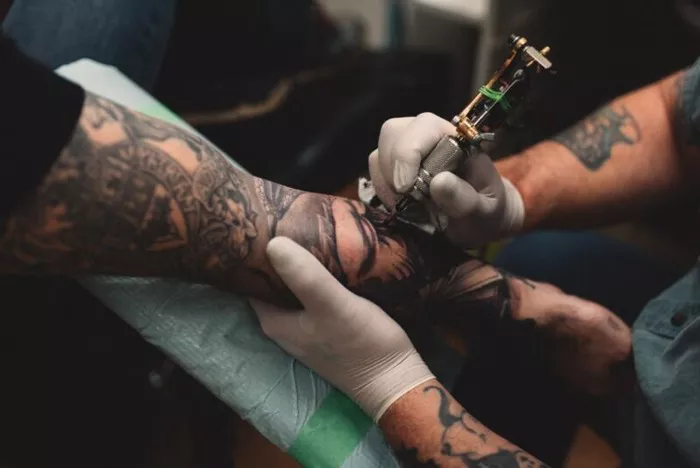Getting a tattoo is a significant commitment, both in terms of time and money. Whether you’re adding to an existing tattoo or embarking on a new design, understanding the appropriate waiting period between sessions is crucial for optimal results and health. This article will explore the general waiting period recommended between tattoo sessions, the factors affecting healing time, the importance of allowing your tattoo to heal, and practical tips for ensuring a smooth and successful process.
How Long Do You Have to Wait Between Tattoo Sessions?
Typically, a waiting period of four to six weeks is recommended between tattoo sessions. This timeframe allows your skin to heal adequately before undergoing further tattooing. However, this is a general guideline, and individual healing times may vary based on several factors.
Factors Affecting Healing Time
Several factors influence how long you should wait between tattoo sessions:
1. Size of the Tattoo
The size of your tattoo significantly affects the healing time. Larger tattoos generally require a longer healing period. For example, if your tattoo covers a substantial portion of your body, it might take up to ten weeks for the area to fully heal. This extended healing time is necessary because larger tattoos involve more extensive work and, consequently, more stress on your skin.
2. Amount of Ink Used
The amount of ink used in a tattoo can also impact healing time. Tattoos that require a substantial amount of ink, such as those with heavy shading or multiple colors, might take longer to heal. On average, you might need to wait around eight weeks before scheduling another session. The reason is that the body needs time to process and recover from the additional ink and trauma.
SEE ALSO: Meaning & Symbolism of Ship Tattoos
3. Skin Type
Your skin type plays a crucial role in how quickly it heals. Sensitive or easily irritated skin may require a more extended recovery period. If you have sensitive skin, it’s advisable to wait at least four weeks before scheduling your next tattoo session. Sensitive skin can react differently to the tattooing process, necessitating more time to recover fully.
4. Type of Tattoo Needle
Different tattoo needles can affect the healing time. Larger gauge needles or surgical needles, which are used for detailed or intricate work, may add extra weeks to your healing period. These needles create more significant trauma to the skin, requiring a longer time for the skin to heal completely. It’s essential to consider the type of needle used when planning your subsequent tattoo sessions.
Importance of Healing
Allowing sufficient time for your tattoo to heal is crucial for several reasons:
1. Preventing Infection
Adequate healing time reduces the risk of infection and other complications. Fresh tattoos are essentially open wounds, making them susceptible to bacteria and other pathogens. By allowing your tattoo to heal properly before getting more work done, you minimize the risk of infections that can complicate the tattooing process and affect the final outcome.
2. Ensuring Quality
Proper healing ensures that your tattoo looks its best and that the skin is ready for additional work. Healing allows the ink to settle correctly and the skin to return to its natural state, which is essential for achieving high-quality results. Rushing the process or getting a new tattoo before the old one has healed can lead to complications that might affect the appearance and longevity of your tattoos.
Practical Tips
To ensure a smooth healing process and prepare for your next tattoo session, consider the following practical tips:
1. Aftercare Instructions
Following detailed aftercare instructions is crucial for promoting healing and preparing for the next session. This includes keeping your tattoo clean and moisturized, avoiding direct sunlight, and refraining from scratching or picking at the area. Proper aftercare minimizes the risk of complications and ensures that your tattoo heals as expected.
2. Signs of Healing
Knowing the signs of healing can help you determine when it’s safe to schedule your next tattoo session. Some indicators that your tattoo is healing well include:
Reduced redness and swelling: As your tattoo heals, the initial redness and swelling should decrease.
No oozing or crusting: The area should no longer ooze or develop crusts.
Even skin texture: The skin should return to a smooth texture without raised areas or abnormal bumps.
If you notice any unusual symptoms, such as persistent redness, swelling, or discharge, it’s essential to consult with your tattoo artist or a healthcare professional before proceeding with additional sessions.
Conclusion
In summary, the waiting period between tattoo sessions is generally four to six weeks, but this can vary based on factors such as the size of the tattoo, the amount of ink used, skin type, and the type of needle employed. Proper healing is essential for preventing infection, ensuring quality results, and maintaining the health of your skin. By adhering to aftercare instructions and recognizing the signs of healing, you can effectively manage the tattooing process and achieve the best possible outcome for your tattoo projects.
Related Topics

